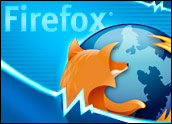
EnterpriseDB made its official debut in May with the release of its EnterpriseDB 2005 public beta release. Built on the open-source PostgreSQL database, the company is touting it as the world’s most advanced and mature open-source database.
While MySQL, the open-source database leader, may have something to say about that, it is clear that the incumbent has some new competition nipping at its heels.
In addition to EnterpriseDB, Greenplum recently announced its Bizgres Project, an open-source project with the goal of building a complete database platform for business intelligence. It, too, uses the PostgreSQL platform.
Does the emerging competition signal an exploitable weakness in MySQL? Or rather a broad-based opportunity for open-source DB players vying to grab market share from commercial vendors?
Odysseas Tsatalos, CTO of oDesk Corp., a global technology staffing firm, told LinuxInsider that the open-source database market is in flux.
“My view is that MySQL is losing its lead,” he said. “I do believe that the gap between Oracle and any other open-source DB is still significant, which means that there is still place for a new kid in a block.”
The New Kid
One of those new kids is EnterpriseDB. Andy Astor, the company’s CEO, told LinuxInsider that he’s confident in EnterpriseDB’s ability to compete with market veterans like MySQL and Computer Associates’ Ingres.
“Technical issues such as transaction handling, true stored procedures, proper foreign key processing, and multi-version concurrency controls are just some of the features that are either not present or just being added to MySQL,” he said.
But Astor also admitted that newcomers like EnterpriseDB and the Bizgres Project face a major challenge in the enterprise database market: raising brand awareness.
“We have a great product that is backed by a great company, but we have to get that word out,” Astor said. “The good news is that we are making great progress towards that goal. We have already seen hundreds of thousands of Web site hits, and thousands of downloads.”
Market Leader
Computer Associates’ Tony Gaughan, senior vice president of development, told LinuxInsider that MySQL is the undisputed market leader and has paved the way for other open-source databases.
But, he added, MySQL doesn’t have all the necessary database functionality to allow mainstream transactional applications to take place. For that reason, Gaughan said he stands behind his company’s Ingres as the superior open-source database.
“MySQL has many strengths but clearly it lacks strong transactional capabilities,” he said. “With its new release … they have added features that are fundamental to any database; functionality that has existed in Ingres for 10 to 15 years. It is yet to be seen whether these will perform and scale. Ingres is functionally at least 5 years ahead ofMySQL.”
MySQL’s Responses
Zack Urlocker, vice president of marketing for MySQL AB, told LinuxInsider that he views the entrance of new players supporting the rapidly-expanding market for open-source databases as a positive development.
“Having large vendors like IBM and Computer Associates involved continues to validate open-source by making corporate IT managers more comfortable with our model,” Urlocker said. “Additionally, we believe that customers are better served by vendors when they have a variety of products to choose from.”
However, Urlocker also said there is a good reason why over 6 million installations worldwide have selected MySQL to power their high-volume Web sites, business-critical applications and packaged software. He is confident of the company’s market leadership and argues that MySQL earned its status based on high performance, ease-of-deployment, reliability and low administration.
“We are not the most complex technology — we leave that battle to others to fight,” he said. “We’re the ‘Honda’ of relational databases: the right choice when you need a low-cost, reliable and easy-to-maintain solution that works really well.”
Strengths or Weaknesses?
In response to claims that MySQL has exploitable weaknesses, Urlocker points to a December 2004 Forrester Research report that rates its product above PostgreSQL and others for strategy and market adoption.
“MySQL continues to have a very high adoption rate across several industries and is known for its reliability, ease of use, and performance,” observed Forrester Research analyst Noel Yuhanna. “It is a full, relational DBMS, and it supports row-level locking and deadlock detection functionality.”
The beta version of MySQL 5.0 includes stored procedures, triggers, views, cursors, XA and information schema that analysts said positions it well as a premier enterprise-class database.
Database Race
Regardless of which vendor you pick in the open-source database horse race, open source itself is a good bet, according to Yankee Group analyst Dana Gardner. Gardner told LinuxInsider that open-source databases generally hold a lot of promise, and there is room for multiple players.
“There are so many instances of data being collected and cached and stored and warehoused and manipulated that there’s bound to be lots of niches and nooks and crannies for an open-source approach to make headway,” he said. “So to be an open-source database community of products makes sense. One size doesn’t usually fit all.”




















































